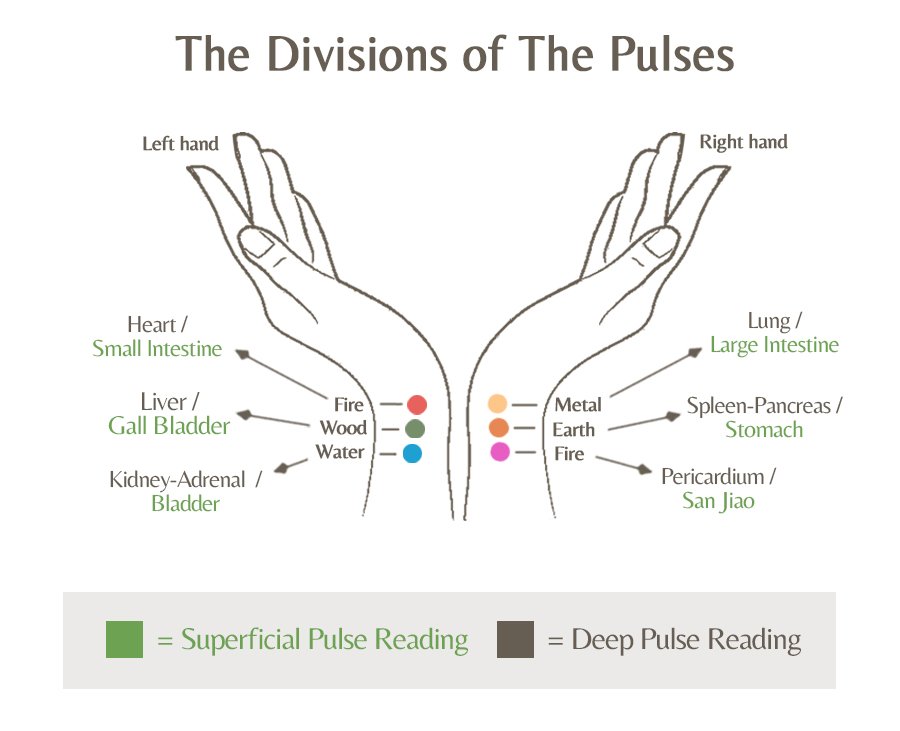12 Jan Pulse Diagnosis in Acupuncture
 12 Jan 2022
12 Jan 2022
Chinese Medicine, pulse diagnosis involves examining the pulse in each wrist by placing three fingers at the radial artery ![]()
This method is thousands of years old and has been recorded in ancient Chinese medicine texts. It has also been refined by many Masters across time. There are several excellent methods of pulse diagnosis and we are demonstrating one method or style of pulse diagnosis in this blog article.
During Pulse diagnosis, each wrist is touched with 3 levels of pressure.
These levels are:
- Superficial (almost no pressure in order to feel the rise of the pulse under the skin’s surface)
- Intermediate (a light pressure to feel the basic form of the pulse)
- Deep (heavier pressure to feel how the pulse rebounds from physical constraint)

Feeling each of the individual pulse positions allows a Chinese Medicine Practitioner to assess the condition of each listed internal organ and its associated acupuncture meridian and their state of Qi and Blood. The left wrist presents information for the Heart/Small Intestine, Liver/Gall Bladder and Kidney-Adrenal/Bladder, while the right wrist presents information about the Lungs/Large Intestine, Spleen-Pancreas/Stomach and Pericardium/San Jiao (“organs” understood in Chinese Medicine). These are also linked to the five elements in Chinese Medicine as indicated in this diagram as Wood, Fire, Earth, Metal and Water, and the flow between pulses in the sequence of the five elements gives an indication of correct communication and flow of Qi in the body.
Whether you have a health condition you want to address, or you are in fine health, pulse diagnosis can give us information on how we can maximise your health by creating a balance in your body. If you would like to organise a session with Peter you can now easily book online via our website!



